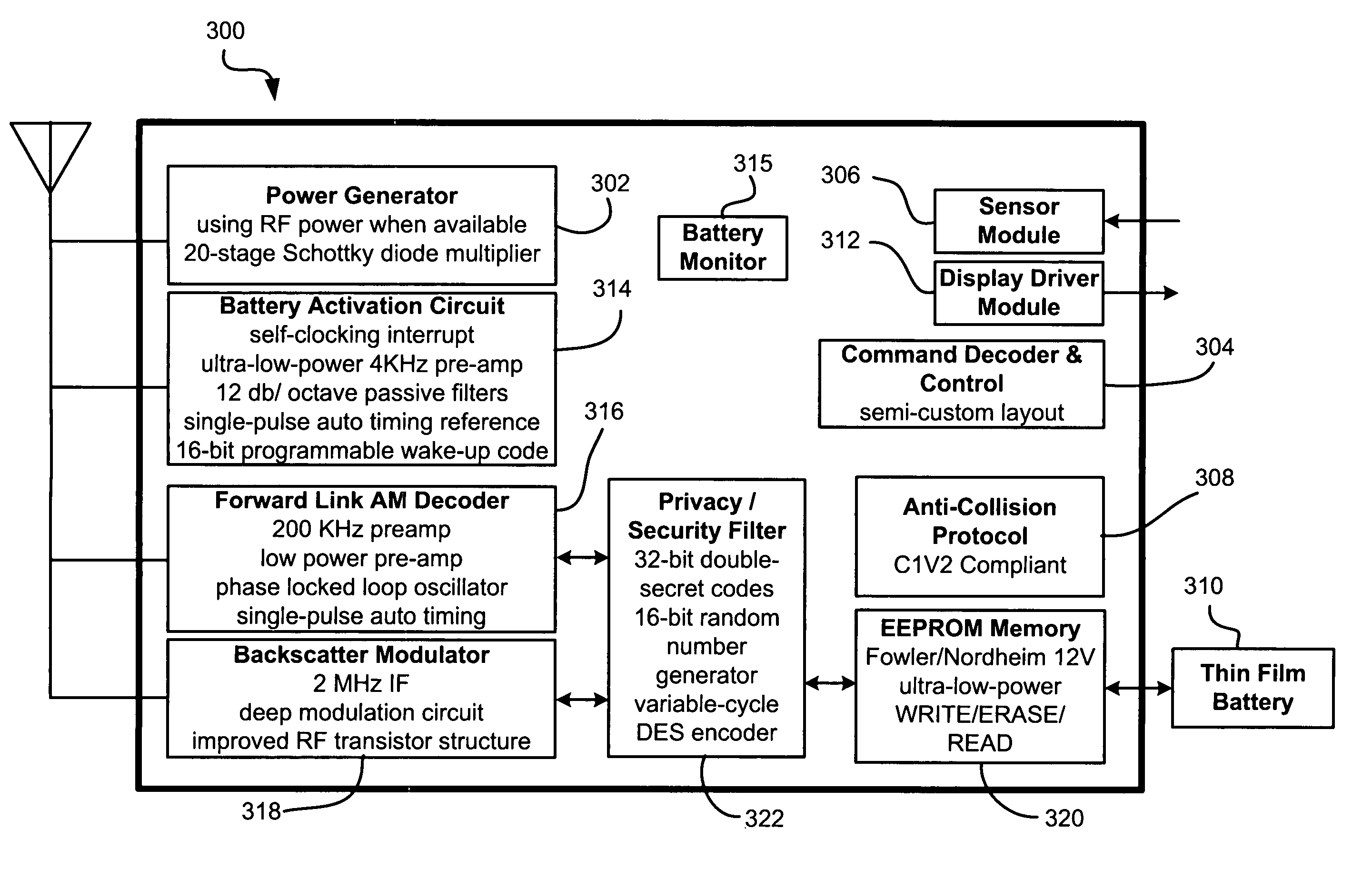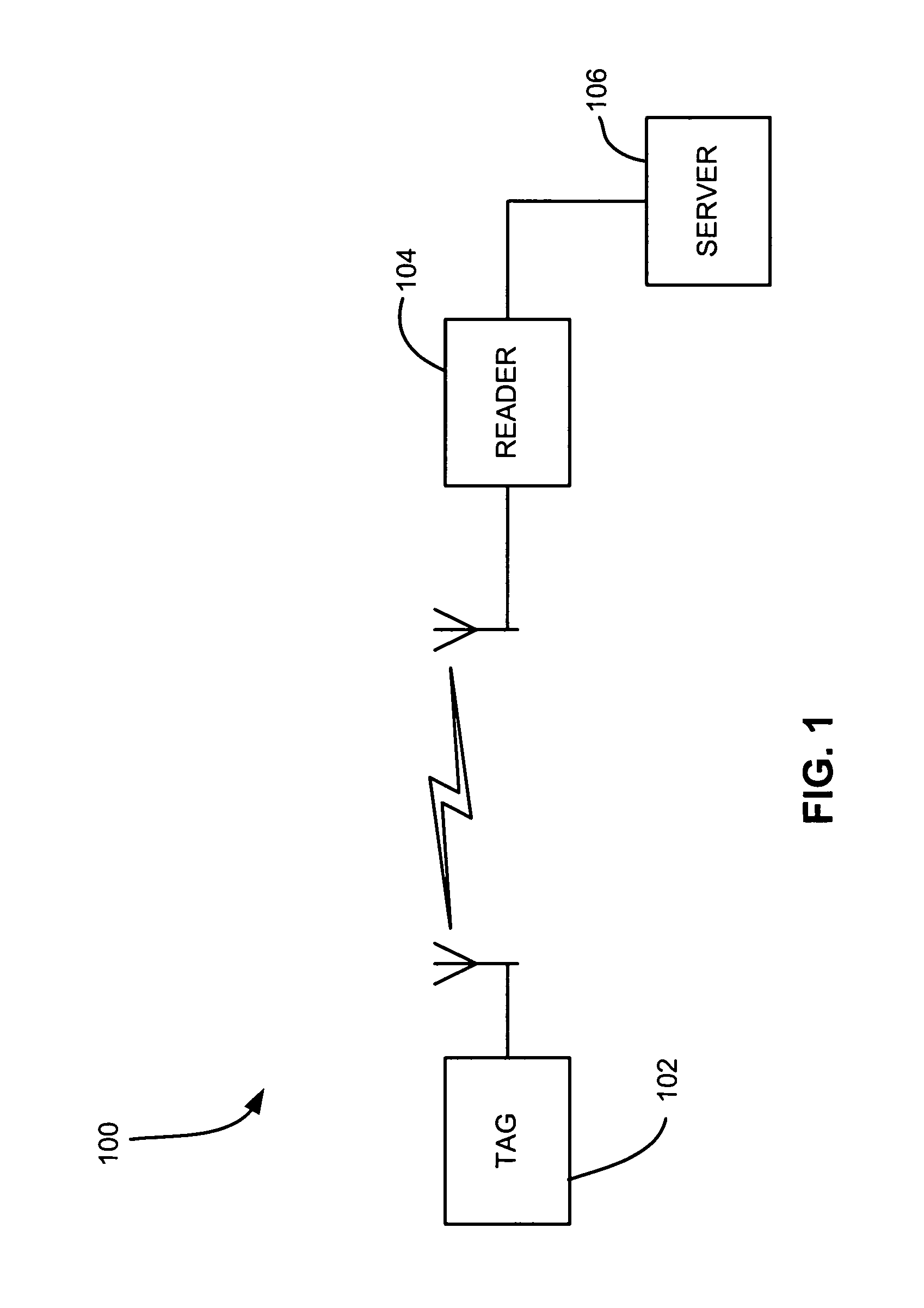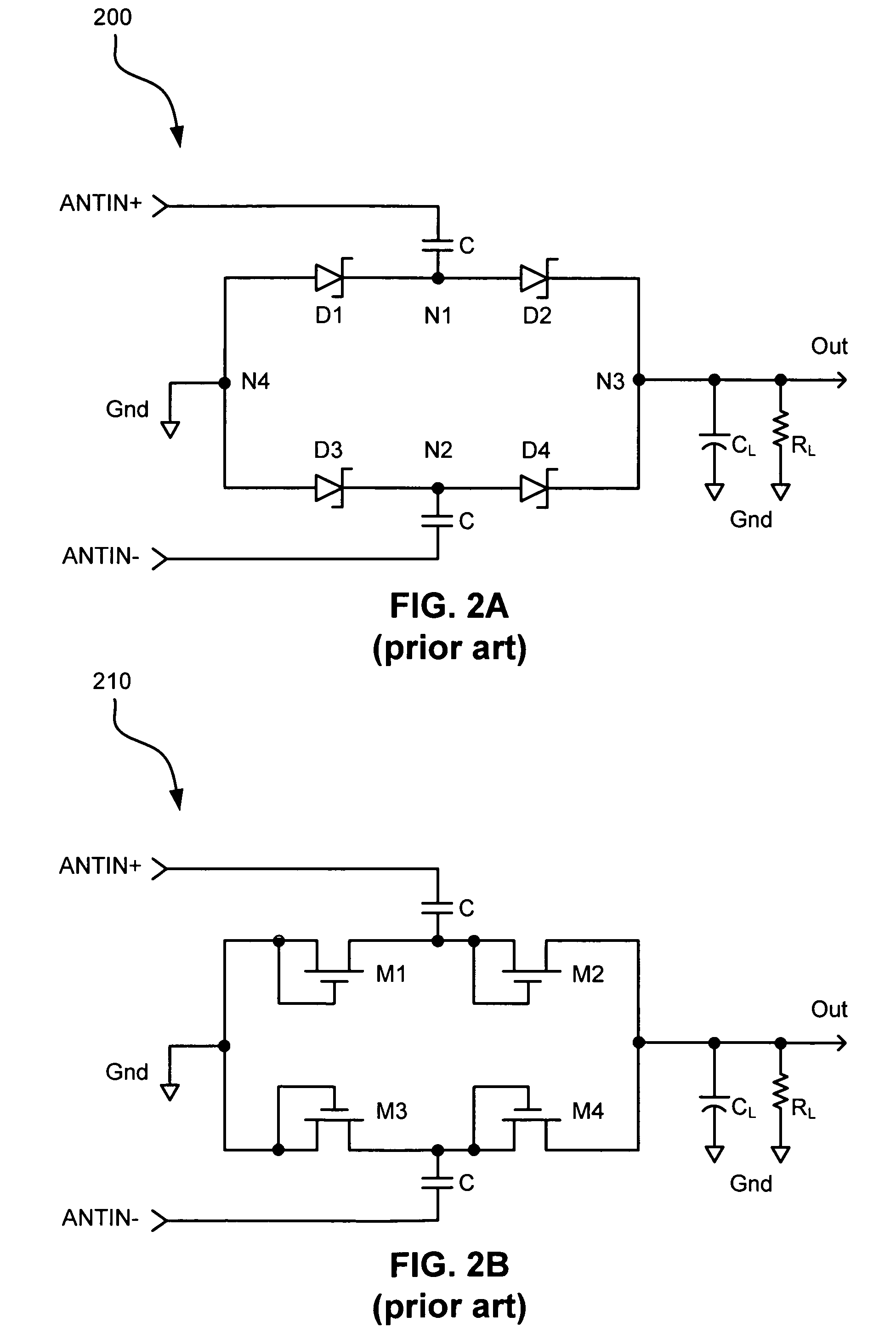Differential input circuit with process variation and temperature compensation
a differential input circuit and temperature compensation technology, applied in the field of radio frequency signal processing circuitry, can solve the problems of billion dollar inventory visibility problem, inability to meet the needs of customers, so as to increase the sensitivity of the receiving a
- Summary
- Abstract
- Description
- Claims
- Application Information
AI Technical Summary
Benefits of technology
Problems solved by technology
Method used
Image
Examples
Embodiment Construction
[0046]The following description is the best embodiment presently contemplated for carrying out the present invention. This description is made for the purpose of illustrating the general principles of the present invention and is not meant to limit the inventive concepts claimed herein.
[0047]The following specification describes systems capable of using normal threshold N-Channel MOS (NMOS) and other types of semiconductor devices which are DC-biased at their inversion region. The “inversion region” collectively refers to a point in the weak inversion (i.e., sub-threshold) region and the strong inversion region (at threshold and above) of the semiconductor device. In an AM detection application, these either weakly or strongly turned-on semiconductor devices will increase the receiving AC sensitivity of an AM-Detector as compared to that of a conventional AM-Detector (FIGS. 2A-C) using normal threshold NMOS devices without any DC-biasing. The disclosed circuits are also useful in ch...
PUM
 Login to View More
Login to View More Abstract
Description
Claims
Application Information
 Login to View More
Login to View More - R&D
- Intellectual Property
- Life Sciences
- Materials
- Tech Scout
- Unparalleled Data Quality
- Higher Quality Content
- 60% Fewer Hallucinations
Browse by: Latest US Patents, China's latest patents, Technical Efficacy Thesaurus, Application Domain, Technology Topic, Popular Technical Reports.
© 2025 PatSnap. All rights reserved.Legal|Privacy policy|Modern Slavery Act Transparency Statement|Sitemap|About US| Contact US: help@patsnap.com



